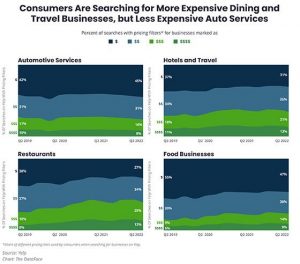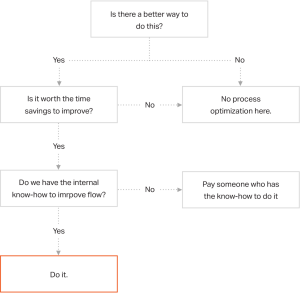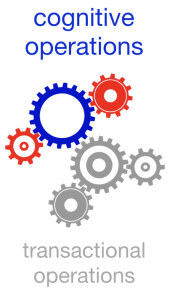Columnist Adam Weiss shares four ways affiliate partnerships are designing the future of influencer marketing.

Ivanka Trump is an Executive Vice President of The Trump Organization, founder of her self-titled fashion line, a media mogul with her IvankaTrump.com content site for working women and an activist for women finance professionals.
It appears that we can add both “influencer” and “affiliate marketer” to that long list, now that @IvankaTrump’s Twitter account has encouraged followers to “shop Ivanka’s look from her #RNC speech” with an affiliate link leading to Macy’s, which carries her clothing line.
As someone with a long career in affiliate marketing, I see this as an exciting example of how affiliate relationships are propelling digital advertising into the future — making this long-established native platform even more native with seamless omni-channel touch points that bring aspirational content to life for consumers. (Editor’s note: Some may argue that Ivanka should have disclosed her relationship within the tweet, though the landing page clearly labels the dress as being from her collection.)
Combining broadcast, social and advocacy platforms to promote engagement is just one example of the many ways I see affiliate moving into the future. Following are four predictions based on emerging strategies we’re seeing in affiliate partnerships today.
Affiliate will dominate the intersection of online and offline influence
Ubiquitous user-friendly platforms to create content and build audiences online and across devices have fueled the growth of influencer marketing and created new roads for affiliate marketers. At the same time, the nature of the modern influencer’s role uniquely positions marketers with the right relationships to extend the success of their affiliate programs to offline audiences and to track its success.
As we see in the example of Ivanka Trump, we’ll see an increase in affiliate relationships aimed at influencing both online and offline audiences. We are used to seeing these types of partnerships in the context of brand sponsorship dollars. While it’s not likely that these targeted investments will ever become a thing of the past, affiliate programs will be empowered to recreate the offline-to-online exposure and reach generated by those campaigns.
Advertisers will leverage it to create an outlet for micro-campaigns and niche audience objectives that run in parallel with the big brand advertising initiatives. For influencers, it will become an increasingly valuable strategy for ensuring the longevity of their site monetization and the brand relationships that fuel their public image.
Already today, we see the start of this trend with the use of coupon codes, card-linked offers and geo-targeted deal alerts via mobile apps. The latest iteration is mobile coupons that can be added to coupon aggregator apps or digital wallets and scanned at point of sale. In the longer term, we’ll see tracking strategies like these become increasingly sophisticated to optimize live appearances, like Ivanka’s RNC speech, through streaming technology applied to next-generation innovations, like smart TVs and self-driving cars.
Innovation in social monetization
Affiliates and affiliate marketers were thrilled when Pinterest announced its re-launch of affiliate links earlier this year, and we expect to see other social networks follow suit. Today, influencers building their presence on Facebook, Instagram and Snapchat are implementing indirect workarounds to point followers to their affiliate links. As social grows as a leading platform for advertising and a hub of ad innovation, there will be increasing demand for advertisers and publishers to have more control over social investments. The use of affiliate links will be a major part of that shift.
The existence of affiliate links won’t be the only innovation, however. The native nature of social platforms will lead to the migration of affiliate links in the text to embedded links inside images, videos, GIFs and memes. This shift is already happening on YouTube, and will be followed by other innovations to advance the seamlessness of advertising.
Personalization will become the standard for affiliate advertising
Recent innovations in affiliate are addressing the increasing control consumers are taking over their ad exposure, as well as their heightened expectation for advertising to add value to their online experience. Affiliate networks, including mine, have invested in real-time link serving to optimize affiliate offers based on the visitor’s history with the brand. For example, greater cash-back for a new consumer, or a loyalty coupon for an existing customer.
The possibilities for personalization will continue to grow as the industry gets smarter at leveraging big data to improve the integrity of advertising across devices, social networks and in-store experiences.
Mobile won’t stop growing
With 75 percent of consumers using their mobile devices in-store to read reviews, find better pricing or make an actual purchase, the growth of mobile underlies all of these predictions. Without it, today’s online-to-offline advertising strategies wouldn’t exist, and influencer marketing would never have blown up without the ability to take photos and post on the go. Understanding mobile as an extension of our everyday lives is the key to creating connections and moments that influence consumers.
Today, there is a strong affiliate presence in mobile. Software development kits for mobile tracking empower marketers to invest affiliate dollars towards strategies aimed at app adoption and in-app engagement. We’ll continue to see innovation that strengthens the success of affiliate marketing in mobile environments, as well as the broader Internet of Things (IoT), with technology, formats, tracking and offers that carry the native legacy of affiliate advertising into the future of digitization.
I’m excited to see the next cultural example of affiliate partnerships, and I’ll continue to keep an eye on those crystal-ball moments that remind us about the innovative future of digital marketing.
Some opinions expressed in this article may be those of a guest author and not necessarily Marketing Land. Staff authors are listed here.
Marketing Land – Internet Marketing News, Strategies & Tips
(34)









